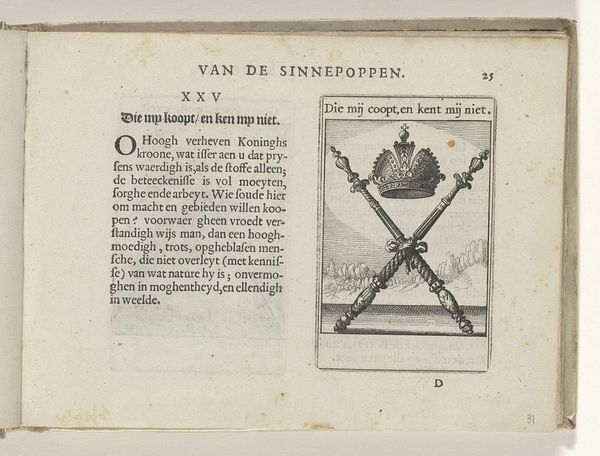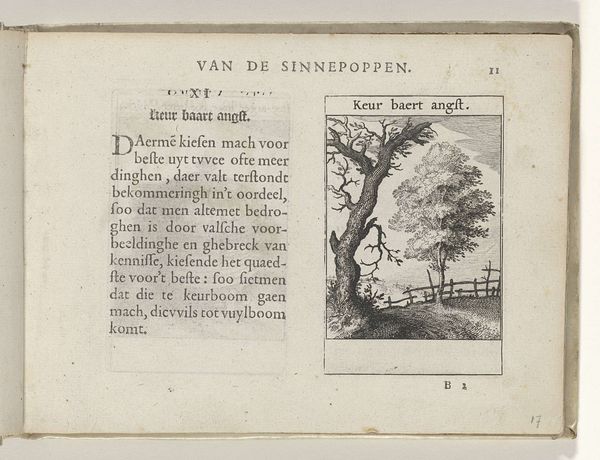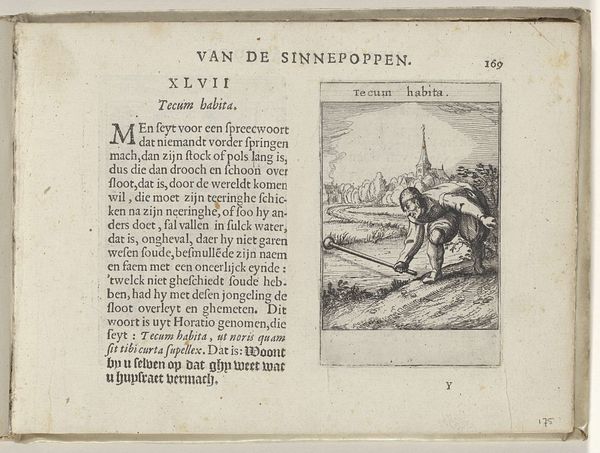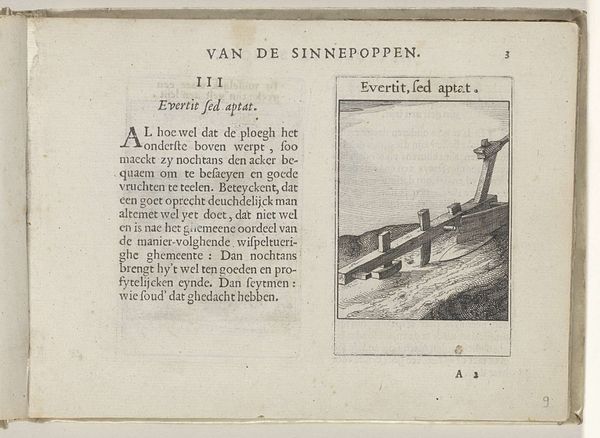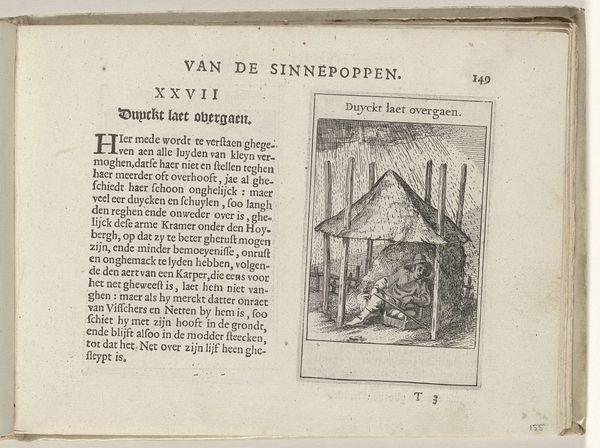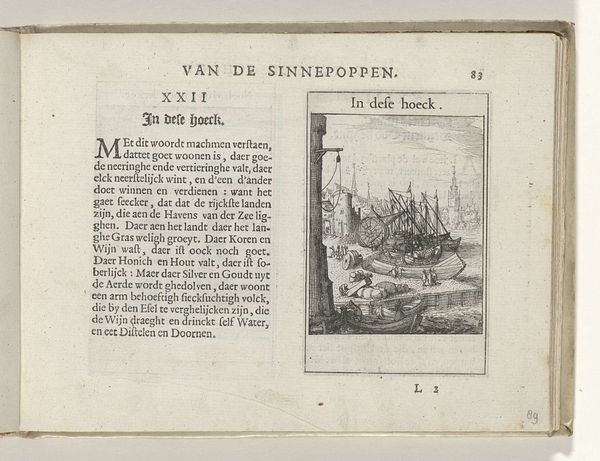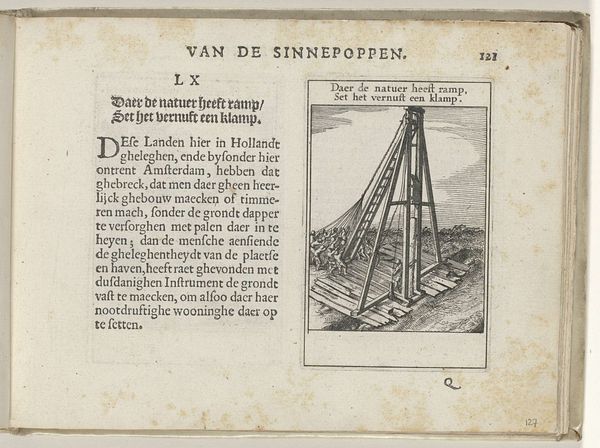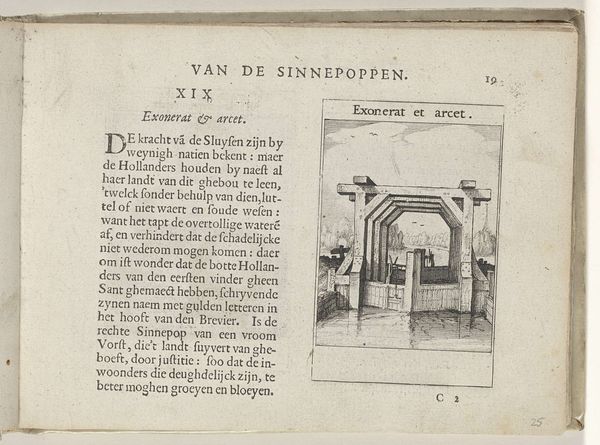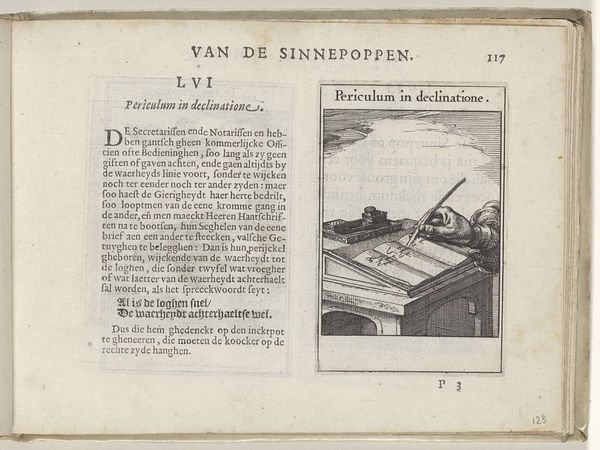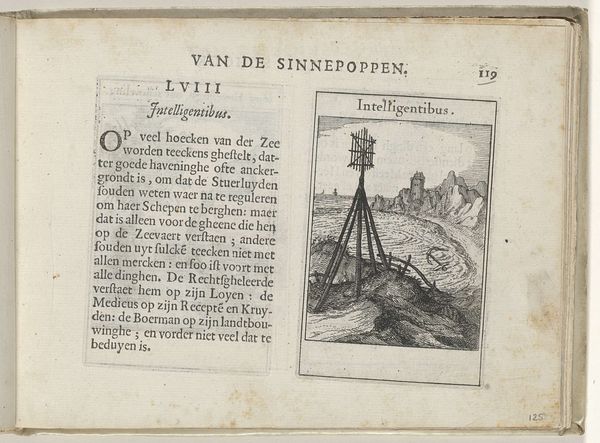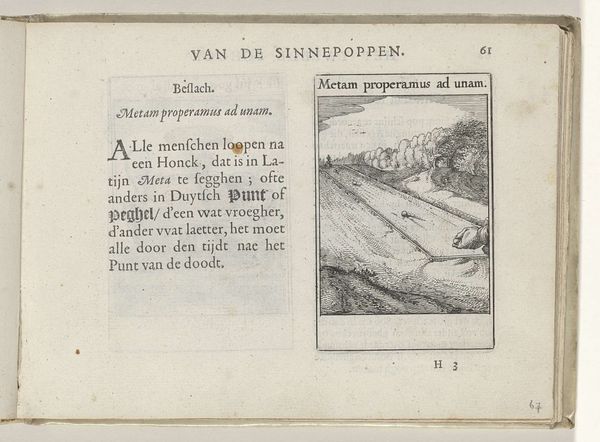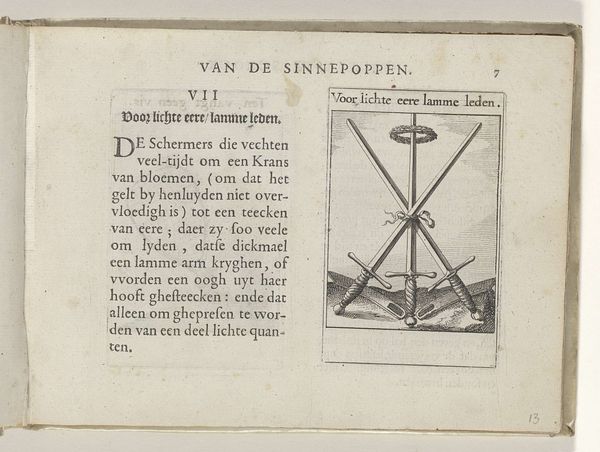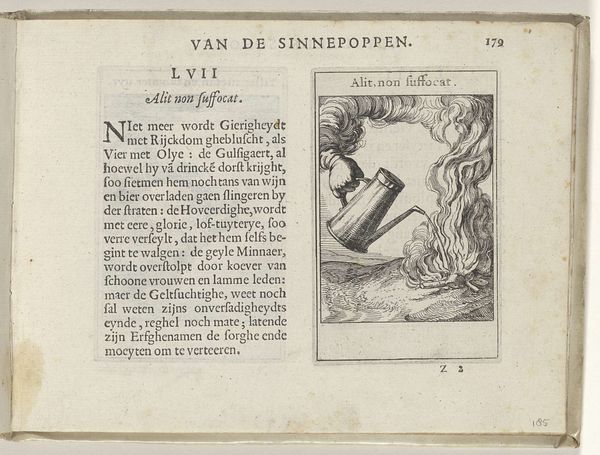
print, engraving
#
narrative-art
#
dutch-golden-age
# print
#
landscape
#
figuration
#
engraving
Dimensions: height 137 mm, width 188 mm, height 95 mm, width 60 mm
Copyright: Rijks Museum: Open Domain
This engraving, titled "VI Duycken en ghenoegen" was made by Roemer Visscher around the late 16th or early 17th century. The stark contrast of the black lines against the off-white paper creates a striking visual field, immediately drawing the eye to the image of a dilapidated gate. The artist manipulates perspective to suggest depth, yet the scene remains ambiguous. The gate, composed of rough-hewn wooden planks, is both a barrier and an invitation. The tilting horizon line destabilizes any sense of conventional landscape, hinting at a world in flux. Visscher is playing with semiotic codes. Gates symbolize transitions, boundaries, and passages; the dilapidated state of the gate suggests decay, or perhaps the transience of material structures. The accompanying text reinforces this idea, speaking of safety and freedom. Thus, the artwork invites us to consider the unstable nature of security.
Comments
No comments
Be the first to comment and join the conversation on the ultimate creative platform.
